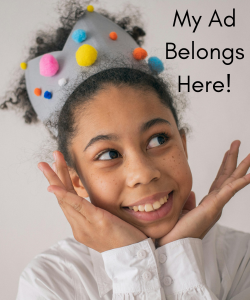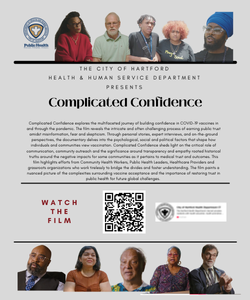By Sara Youngblood Gregory
Presidential elections are a hellish carousel of media frenzies, debate brackets, caucuses, conventions, and months-long campaigning. It takes a toll. The American Psychological Association found that the 2020 presidential election was a significant source of stress for 68% of adults. This stress hits particularly hard for people from marginalized communities, whose rights and dignities are often a matter of political debate: 72% of LGBTQ voters experience a negative mental and emotional impact due to current political discourse, according to a 2024 poll conducted by GLAAD. Hateful discourse doesn’t stay isolated to the campaign trail either, as nearly half of LGBTQ voters have experienced harassment or bullying as a direct result of our current political climate.
“In my practice, I’ve already observed some of the impacts of election-related stress,” says counseling psychologist and scholar-activist Della V. Mosley. “Anxiety levels among my Black and Brown friends, clients, family, and colleagues have been consistently high since January.” The 2016 election, too, bore this same bitter fruit. In the hours after Trump’s victory, calls to suicide hotlines saw record highs.
Clearly, most people struggle to weather the acute strain of any modern election. But the 2024 cycle represents something of a perfect storm—four years into the ongoing COVID-19 pandemic and the country’s continued failure to protect public health, two years since the fall of Roe, a historically unprecedented wave of anti-trans legislation, the relentless, U.S.-backed genocide in Gaza, and the ever-present existential threats to American democracy. At a time when politics are often so deeply (and purposefully) uncaring toward the well-being of people of color, those seeking reproductive care, and the LGBTQ community, intentional care is a vital strategy to reclaim power and mutual agency—no matter who you are.
And according to mental health experts, somatic healers, activists, and organizers, building a wellness toolkit that includes that kind of community and self-care may be essential to our survival, through this election cycle and beyond.
Make a Plan Now—and Do It With Community
When it comes to developing a mental health care plan for yourself, your loved ones, or your community, there’s no time like the present. Erica Woodland, founding director of the healing justice organization National Queer and Trans Therapists of Color Network (NQTTCN), recommends two main strategies: resiliency planning and safety planning.
Safety planning is used in many different contexts, but generally aims to identify risks to your personal and/or communal safety, compile resources, and evaluate how you might mitigate harm and increase safety for yourself and others. The point is that you and your loved ones have a clear, communicated plan in place before a crisis. To get started, Woodland recommends using a safety planning tool from the Community Justice Exchange. Though aimed specifically toward intimate partner violence, the safety planning section (starting on page 23) can be adapted across a variety of situations and needs.
Meanwhile, resiliency planning involves identifying the protective practices that help safeguard people’s well-being and increase their resiliency, both long term and day to day. Woodland says this can be especially important for organizers, who frequently navigate burnout in their movements. “If I have more resilience, it means the more crisis that happens, I won’t be so easily thrown off,” says Woodland. “It doesn’t mean I won’t be impacted, but we have to have the system set up for people to be able to weave in and out of this work based on their capacity [and] based on their ability.”
Your exact resiliency strategies will depend on your preferences and needs—there are no wrong answers here—but you might start pod mapping to assess your relationships and opportunities for mutual support. As part of this work, take the time to open up a conversation with your loved ones about what it looks like when you need help and how you can step in, and step up, for one another.
“To [plan] with other people is really important, not because other people have to be part of the plan, but [because] when we do these things collectively, it helps to decrease shame around our needs,” says Woodland.
Incorporate Somatic Strategies
In addition to planning for your needs over time, consider how you can tend to your daily needs as well. There are a number of somatic—or body- and nervous system-focused—tools to lean on, says Somaly Nou, MSW, a New York City–based therapist who focuses on Black, Indigenous, people of color, Asian American, and LGBTQ communities.
“One of the ways to connect to the nervous system is movement, feeling every inch of the body when you move,” says Nou. “I have clients that come in for sessions and they’ve never really even experienced their body. So what I do is give a self-massage [and ask], ‘What does the sensation feel like when you’re just massaging your hand? Is that pleasant? Is that warm? Is it cold?’ I know it feels really simple, but this is like where we start to connect to our nervous system and our senses.”
Likewise, Noau recommends co-regulation, or the process of attuning one’s body to another, in order to quiet and calm the nervous system. If you’ve ever felt calm while holding an animal, felt safe in a hug, or were reassured by the soothing voice of a loved one, you’ve likely already experienced the power of co-regulation. Movements like walking or dancing, touch, and ritual can all provide this benefit—it’s less about the specific activity and more about creating the space and availability to connect and be present in your body.
Finally, you might benefit from visualization techniques. If you struggle with boundaries, Nou recommends imagining a shield or egg in front of you to get a stronger sense of where your body starts and ends. “It’s important to recognize this is our space, this is our capacity, and this is where someone else is,” explains Nou. “So much of that [can] merge and blend into each other, especially for nervous systems that are used to appeasing or fawning or pushing.”
Lean on Healing Lineages
Though the election—and politics more generally—are often draining, nourishment can be found in the many lineages of queer resiliency and care.
Rooted in Black feminist theory and practices, Mosley developed Blafemme Healing, which offers not only comprehensive resources to assess personal and collective wellness but also a physical and virtual community space located in Durham, North Carolina. “These community-care spaces offer opportunities for members to release, connect, receive validation and support, and collaboratively devise strategies for resisting oppression and embracing joy,” says the psychologist and activist-scholar. “Recognizing the pervasive nature of oppression and its impact on our daily lives, it’s essential to carve out intentional spaces to counteract these forces.” You may join a virtual or in-person healing or grief circle, connect to a local faith group, or attend an LGBTQ and/or BIPOC-focused community offering. To get started, check out peer support spaces like the Fireweed Collective, QTPOC Mental Health and Identity House, as well as the NQTTCN’s community page.
You may also choose to carve out some intentional time for reading, either on your own as or in conversation with loved ones. NQTTCN founder Woodland and organizer Cara Page co-edited the anthology Healing Justice Lineages: Dreaming at the Crossroads of Liberation, Collective Care, and Safety, which guides readers through the many legacies of healing justice and offers models for care, safety, and political liberation. Likewise, Shira Hassan’s Saving Our Own Lives: A Liberatory Practice of Harm Reduction and Leah Lakshmi Piepzna-Samarasinha’s Care Work: Dreaming Disability Justice are great books to start.
However, prioritizing well-being doesn’t mean always engaging in spaces that are facilitated, formal, or therapy-adjacent. You can look for what somatic therapist Nima Saalabi calls “micropockets” of solidarity and ancestral connection—ritual, dance, touch, storytelling, singing, and other forms of collective embodiment and joy.
“The more one experiences oneself as part of a fundamentally interconnected web [of] past, present, and future with other kin, the more buffer against the oppression,” says Saalabi. “It requires building connections with other folks in ways that disrupt and challenge systems designed to cut us off from our bodies, from our past, and from each other. ”
Saalabi continues: “When we do the radical thing of reconnecting with our queer cultural embodiment with other queer trans bodies of color, we are actually doing what humans have been doing for millennia, and are reclaiming our deep rootedness and repairing the lineages.”
This article was originally published in YES Magazine .





